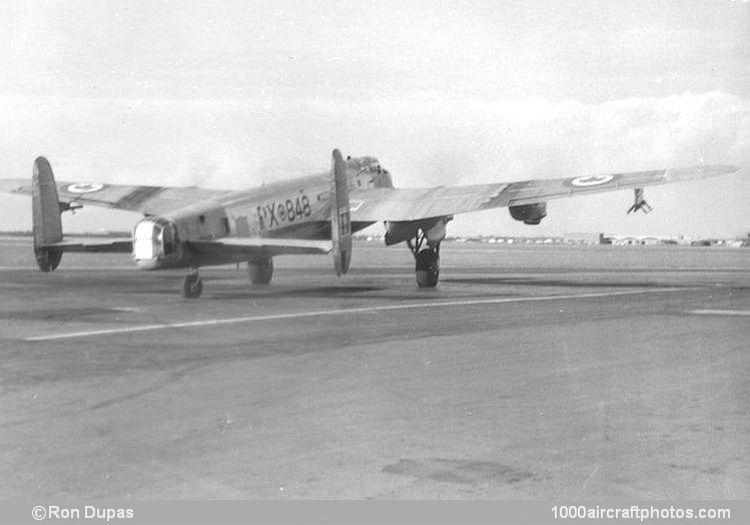01/15/2019. Remarks by Johan Visschedijk: "Built by Victory Aircraft at Hamilton, Ontario, and delivered to the RCAF in January 1945. Coded "NA-G" and named "Hollywood Caravan" it served with No. 428 (B) Ghost Squadron at RAF Middleton St. George, Darlington, Yorkshire, UK. It was returned to Canada on June 8, 1945 and placed in storage.
In 1956, KB848 and another stored Lancaster (KB851) were sent the Fairey Aviation Company of Canada, Ltd. at Eastern Passage, Nova Scotia, for conversion to carriers of Ryan Firebee jet-powered radio-controlled target drones. Launch racks, wiring and control systems were installed for the 1,000 lb (454 kg) thrust, 600 mph (967 kmh) drones that were intended to provide targets for Canada's later generation of interceptors.
After completion of the conversion on January 23, 1957, the aircraft, redesignated Lancaster Mk.10DC, were handed over to CEPE (Central Experimental and Proving Establishment) at RCAF Station Uplands at Ottawa, Ontario, and operated by AAED (Air Armament Evaluation Detachment), a unit of CEPE, at RCAF Station Cold Lake, Alberta. Subsequently the aircraft were flown to USN Auxiliary Air Station at Brown Field, California, USA, in order to confirm the feasibility of using Lancasters to launch this particular type of drone.
Thereafter the two aircraft returned to AAED at Cold Lake, where KB848 and KB851 were allotted the codes "PX-848" and "PX-851" respectively (PX being the identifier code of CEPE). When their involvement in the Firebee trials ceased in 1961, KB851/"PX-851" was struck off charge on August 8, 1961. KB848/"PX-848" spent some time at RCAF Greenwood, Nova Scotia, and was struck off charge April 3, 1964. Subsequently it was scrapped, the nose being preserved at the Canada Aviation Museum."
